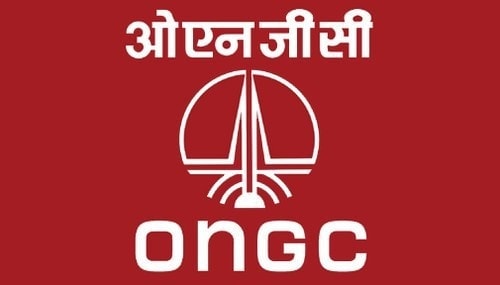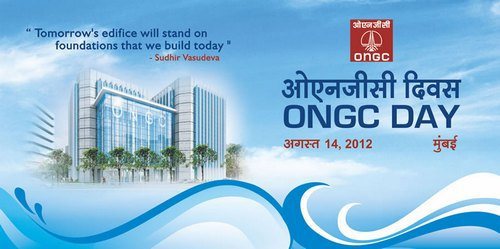The Marketing mix of ONGC analyses the 4Ps of ONGC, including the Product, Price, Place, and Promotions. Oil and Natural Gas Corporation Limited is referred to as ONGC. It is associated with the oil and gas industry and deals in the energy sector. It is a public limited company of Indian origins. The government of India owns ONGC and operates under the Ministry of Petroleum and Natural Gas. The company was founded in 1956 on 14 August, and by 2015, it was ranked 449th as the most enormous corporation in the world on the Fortune Global 500 List. Some of its competitors are as follows-
- IOCL
- Reliance Industries Limited
- Hindustan Petroleum
- Bharat Petroleum
About ONGC
- Type: Central Public Sector Enterprise (CPSE)
- Industry: Oil and gas
- Founded: 14 August 1956
- Founders: Krishna Menon, K.D. Malaviya, and M.L. Chaturvedi
- Headquarters: Vasant Kunj, New Delhi, India
- Area served: India and overseas
- Current CEO: Aloke Kumar
- Number of employees: 300,000+
- Major products: Crude oil, natural gas, and petroleum products
Table of Contents
ONGC Product Strategy
ONGC ranks first as the largest company in India related to the production, development, and exploration of oil and gas. It meets nearly 30% of the total demand within its country as it produces 77% of crude oil and 62% of natural gas in India.
ONGC is involved in exploiting and exploring hydrocarbons and owns and operates a pipeline extending 11,000 km in India. It was responsible for discovering an oil field called Mumbai High and subsequent discoveries of 5 billion tonnes of hydrocarbons.
Its works include refining, exploration and production, oil and natural gas transportation, oil-field services, and production related to value-added products like power, petrochemicals, refining, naphtha, liquefied petroleum gas, and alternate and unconventional energy sources. ONGC is India’s largest mining lease holder and exploration acreage, with twenty-two discoveries by the end of the fiscal year 2015. It has arrested the decline in matured fields using technology-intensive EOR and IOR. By the end of the fiscal year, 2014 product portfolio of ONGC included 151 gas wells and 1184 oil wells offshore, 606 gas wells, and 4735 oil wells in an onshore set-up.
The new Product Mix of ONGC in 2023 is as follows (Source).
- Crude Oil: A primary product sold to refineries for gasoline, diesel, and kerosene processing.
- Natural Gas: Processed to extract hydrocarbons like methane, butane, propane, ethane, and pentane.
- Liquefied Petroleum Gas (LPG): Widely used in household cooking and affordable for domestic consumption.
- Naphtha: A by-product of crude oil distillation utilized in various industrial applications.
- Methane, Propane, Rich Gas, and Kerosene are other significant products, with kerosene often used as cooking fuel in rural areas.
ONGC Place Strategy
ONGC is a multinational company with a Pan-India presence. Its headquarters base is at Dehradun in Uttarakhand. The company operates via its subsidiaries ONGC Videsh Ltd and MRPL and two joint ventures, ONGC Tripura Power Company and ONGC Petro Additions Limited. ONGC has expanded its operations to include seventeen international platforms like Myanmar, Brazil, Colombia, Venezuela, Syria, Sudan, Nigeria, Mozambique, Libya, Iraq, Iran, and Russia, with the help of ONGC Videsh, its international subsidiary.
The company has discovered new resources, including oil and gas at Vasai West in Western Offshore, gas at Chinnewala Tibba in Rajasthan, oil at Banamali and oil and gas at Leapling-Gaon in Assam and oil and gas at GS-KW and gas at GS-49 in Krishna-Godavari offshore. The oil strategy established the ONGC province at the Cambay basin in Gujarat, and onshore and offshore activities were conducted in the East-Coast basin and Assam-Arakan Fold-Belt.
ONGC’s place strategy, focusing on the distribution and availability of its products, can be summarized in five key points:
- Bulk Marketing Channels: ONGC sells natural gas through bulk marketing channels, primarily via the Gas Authority of India Limited, under government regulations.
- Extensive Pipeline Network: The company has established an extensive pipeline network in collaboration with regional gas line pipes, facilitating natural gas distribution to various states in India.
- Direct Sales in Select Regions: In some states like Tripura, Andhra Pradesh, and Pondicherry, ONGC directly sells natural gas to end-users.
- Collaborations for Distribution: ONGC collaborates with entities like MRPL, IOCL, and GAIL to distribute gasoline, diesel, and jet fuel.
- Industrial Sales of By-products: Naphtha, a by-product with wide industrial application, is sold in bulk to business-to-business customers.
ONGC Pricing Strategy
At the end of the financial year 2016, the estimated revenues of ONGC were 139,364.35 crore rupees, and profit was 14,300.93 crore rupees. The company’s market capitalization at the end of the fiscal year 2013 was INR 2.6 trillion, ranking it as the second-largest company in India that is publicly traded. ONGC has been projected as the future of energy in India and has become a high-profit-making enterprise. In 2002-03, it became the first corporation to register a profit figure of five digits. As a government undertaking, it has adopted a reasonable pricing policy and works for the betterment of its country and people.
ONGC’s pricing and marketing strategy is influenced by its status as a government-owned enterprise and the global and domestic energy market dynamics. Here’s a concise overview:
- Government-Regulated Pricing: Being a PSU, ONGC’s pricing is subject to government regulations, especially for natural gas and kerosene products.
- International Market Influence: The crude oil pricing is aligned with international market rates, reflecting global oil price trends.
- Subsidized Pricing for Domestic Use: Prices for products like LPG and kerosene are highly subsidized to support domestic consumption, particularly in rural areas.
- Competitive Pricing within India: Despite competition from other oil companies, ONGC maintains controlled pricing levels, ensuring profitability while adhering to market dynamics.
- Strategic Non-Price Competition Focus: ONGC’s strategy emphasizes non-price benefits to differentiate its offerings, focusing on quality and service rather than engaging in price-based competition.
ONGC Promotion Strategy
ONGC is committed to protecting our environment and set up the Institute of Petroleum Safety, Health, and Environment Management or IPSHEM in 1989 to combat related issues. It offers its staff healthy and safe working conditions as part of this initiative by incorporating environmental safeguards.
ONGC has received several awards and accolades in recognition of its works, such as Asia’s Best Oil and Gas Company by Global Finance and 2nd Biggest E&P Company, according to a 2004 survey by Platts Energy Business Technology. It was conferred with the status of Navratna in the year 1997 and Maharatna in the year 2010, Most Attractive Employer in the Energy Sector in the year 2013 at Randstad Awards, Golden Peacock Award in the year 2014, and Scope Excellence Award in the year 2016.
Some Recent Video ads and Print ads for ONGC are:
Liked this post? Check out the complete series on Marketing Mix

